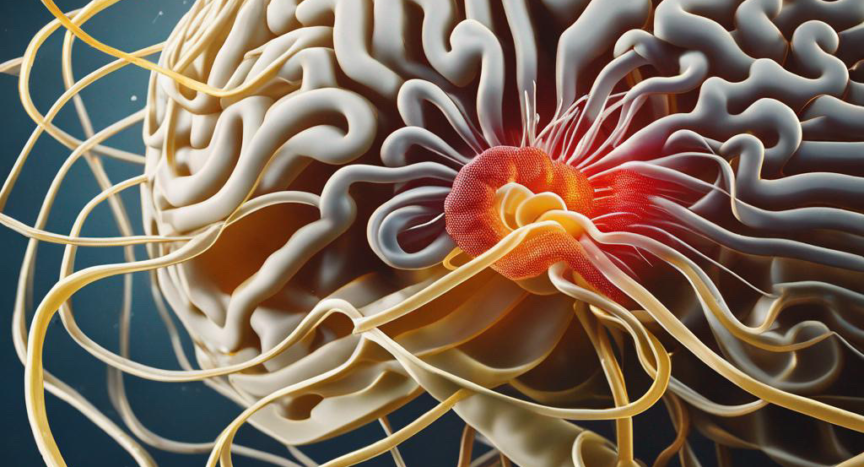Tapeworms, those enigmatic parasites that inhabit the intestines of their hosts, have long fascinated scientists and sparked curiosity about their potential effects on the human body. While their presence in the gut may seem relatively benign, recent research has uncovered a surprising link between tapeworm infection and the brain. Let’s delve into the fascinating world of tapeworms and explore how they can influence the intricate workings of the human brain.
Understanding Tapeworm Infection
Tapeworms are parasitic flatworms belonging to the class Cestoda. These intestinal parasites typically infect humans through the consumption of contaminated food or water containing tapeworm eggs or larvae. Once ingested, tapeworm larvae can develop into adult worms within the intestines, where they attach themselves to the intestinal wall and absorb nutrients from their host’s digestive system.
The Brain as an Unlikely Host
While tapeworms primarily reside in the intestines, certain species have the remarkable ability to migrate to other parts of the body, including the brain. This phenomenon, known as neurocysticercosis, occurs when tapeworm larvae, particularly those of the species Taenia solium, travel through the bloodstream and lodge themselves in the brain tissue. Once in the brain, the larvae can form cysts known as neurocysts, which can lead to a range of neurological symptoms and complications.
Effects on Brain Function
Neurocysticercosis can have profound effects on brain function and neurological health. The presence of tapeworm larvae in the brain tissue can trigger inflammatory responses, leading to swelling, tissue damage, and the formation of cysts. Depending on the location and size of the cysts, individuals with neurocysticercosis may experience a variety of symptoms, including:
- Headaches
- Seizures
- Cognitive impairment
- Vision problems
- Balance and coordination difficulties
- Behavioral changes
In severe cases, neurocysticercosis can result in life-threatening complications, such as hydrocephalus (excess fluid buildup in the brain) or cerebral edema (swelling of the brain tissue).
Diagnosis and Treatment
Diagnosing neurocysticercosis typically involves a combination of imaging tests, such as MRI or CT scans, and serological tests to detect antibodies against tapeworm antigens in the blood or cerebrospinal fluid. Treatment may involve a combination of antiparasitic medications to kill the tapeworm larvae and anti-inflammatory drugs to reduce brain swelling and inflammation. In some cases, surgical intervention may be necessary to remove cysts or alleviate pressure on the brain.
Prevention and Public Health Implications
Preventing tapeworm infection, and subsequently neurocysticercosis, involves practicing good hygiene and food safety measures, such as washing hands thoroughly before eating, cooking food to appropriate temperatures, and avoiding consumption of raw or undercooked meat. Additionally, public health efforts aimed at improving sanitation and access to clean water in areas where tapeworm infection is endemic can help reduce the risk of transmission.
Conclusion: Shedding Light on a Hidden Threat
Tapeworms, those elusive parasites that dwell within the depths of the digestive system, possess the remarkable ability to infiltrate the human brain and disrupt its delicate balance. Neurocysticercosis serves as a sobering reminder of the complex interactions between parasites and their hosts, and the profound impact they can have on human health. By understanding the mechanisms underlying tapeworm-induced neurological complications and implementing effective prevention and treatment strategies, we can strive to mitigate the risks associated with these elusive parasites and safeguard the health of individuals worldwide.








Customer Reviews
Thanks for submitting your comment!